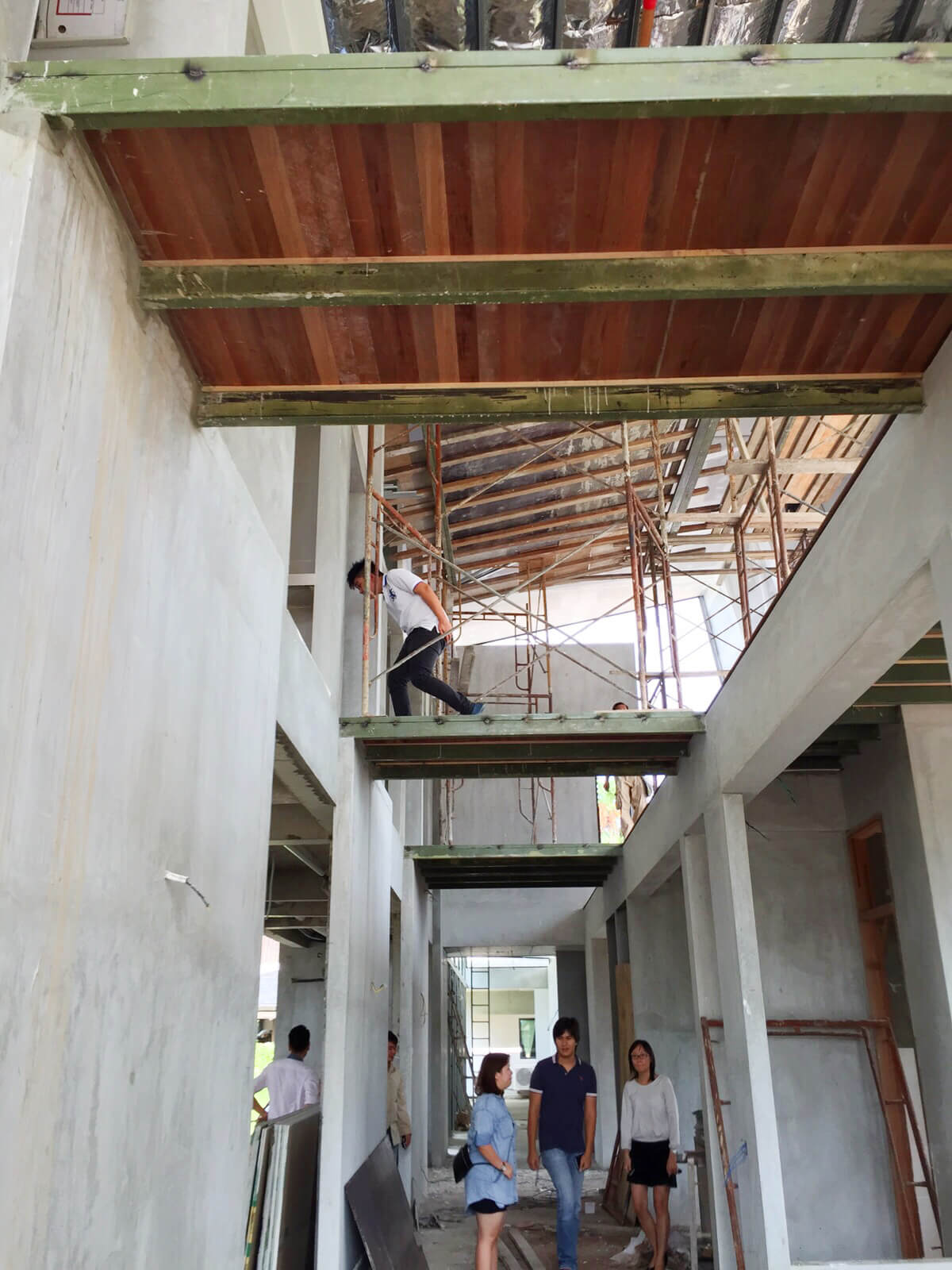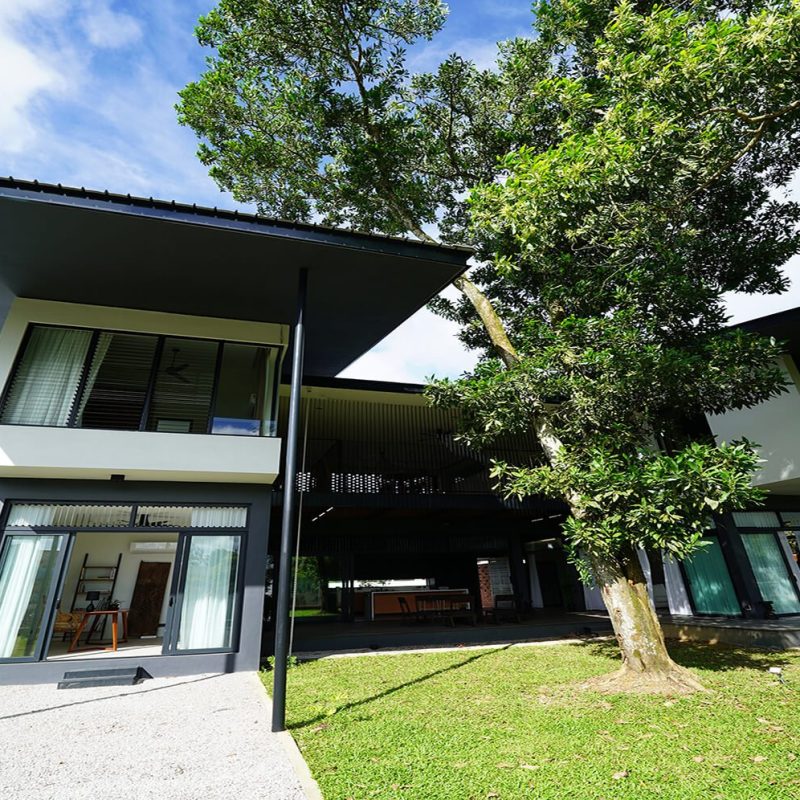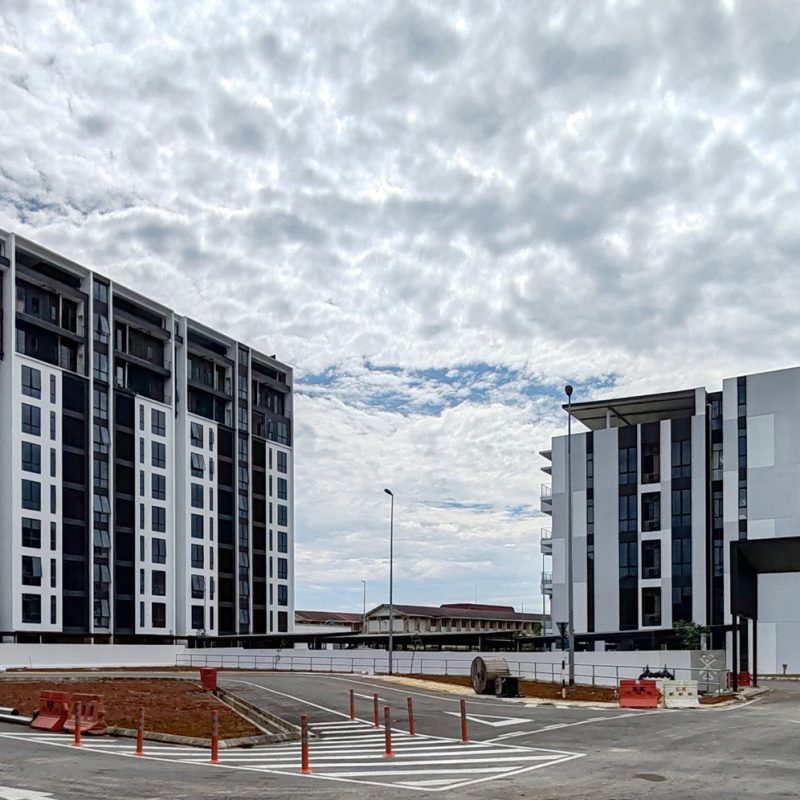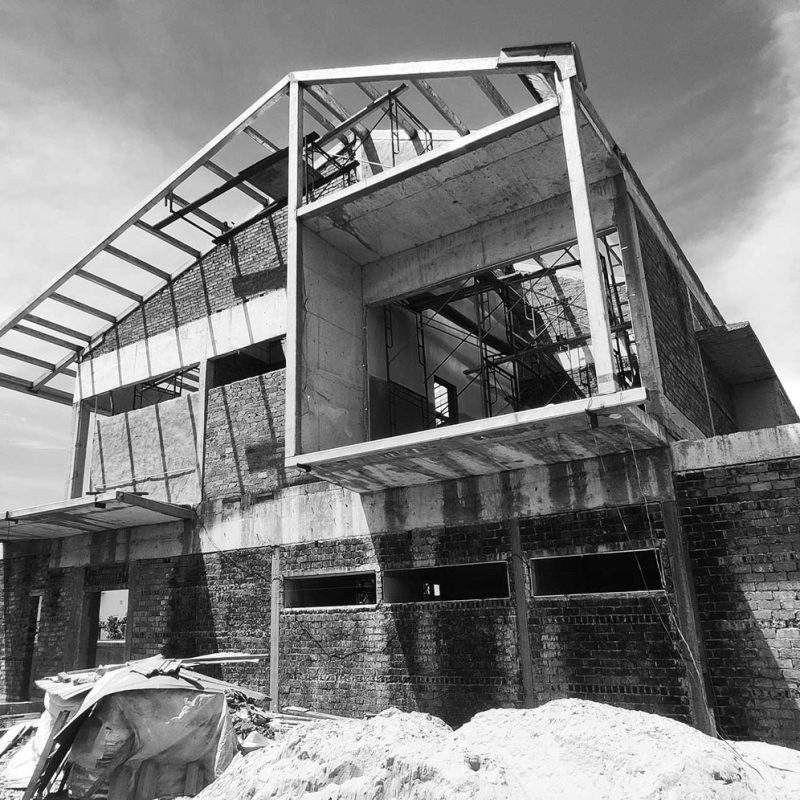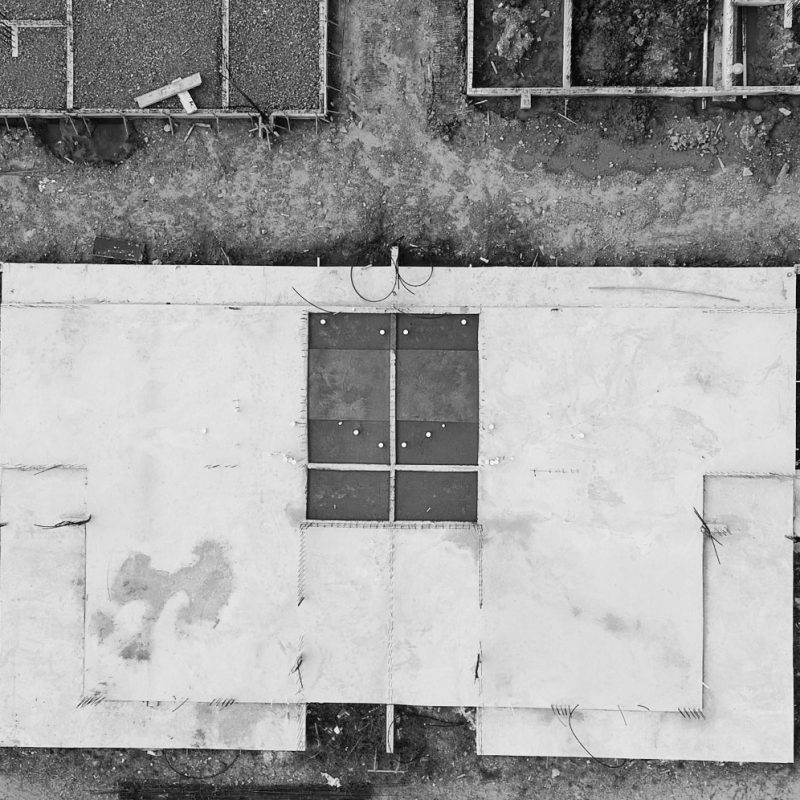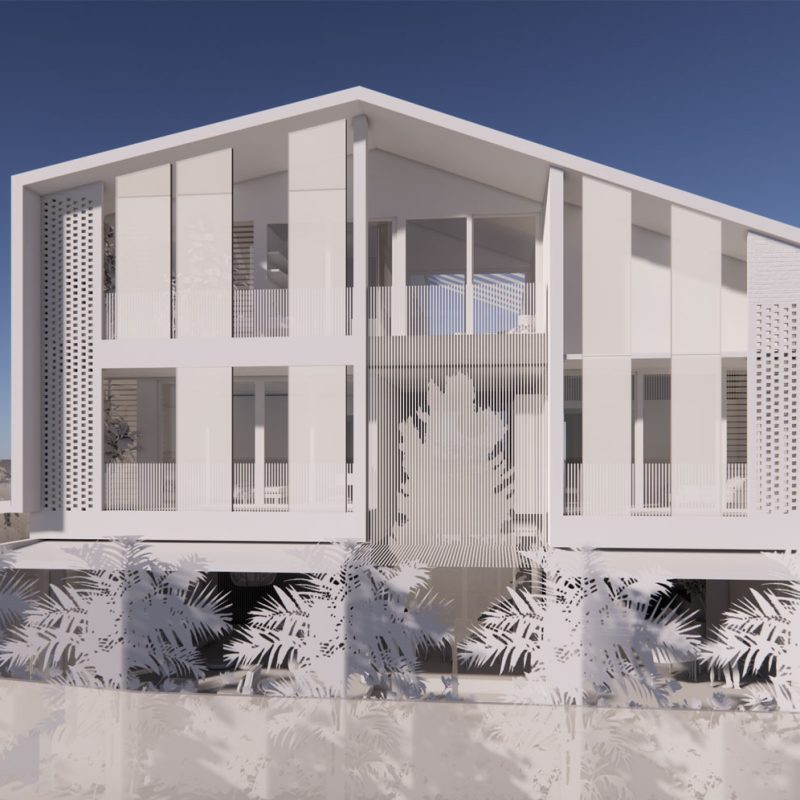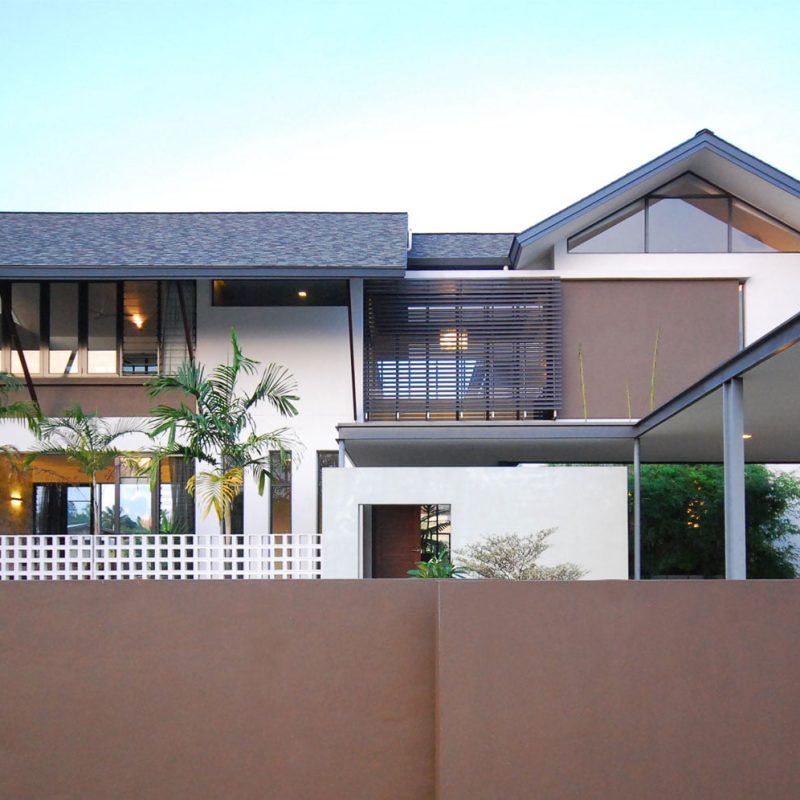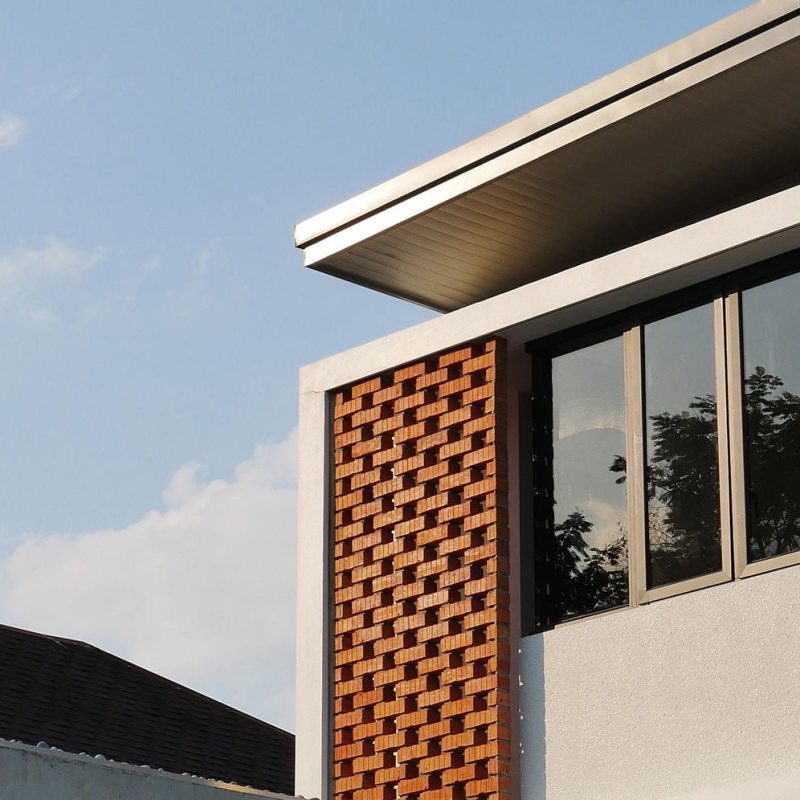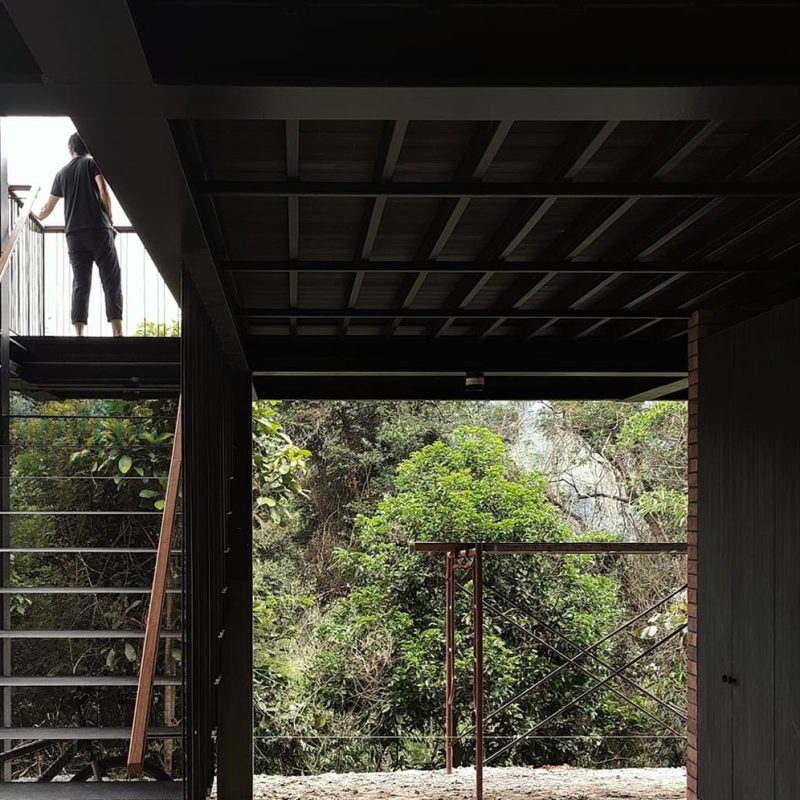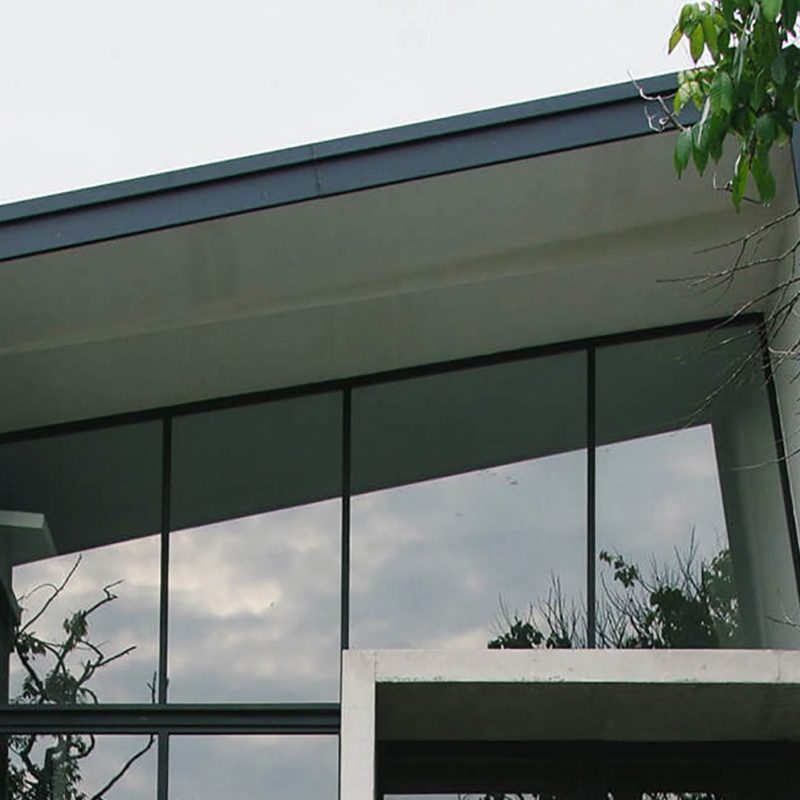Location
- Malaysia
City
- Kuching | Sarawak
Duration
- 2015 – 2017
Client
- Dato Richard L.C. Wee and Datin Dona Drury-Wee
Surface
- Site area
- : 0.36 acre
- Building area
- : 483.51 m2
- Building height
- : 9.5 m | 2 storeys
Status
- Completed
Project Type
- Residential
Themes
- Single Residential
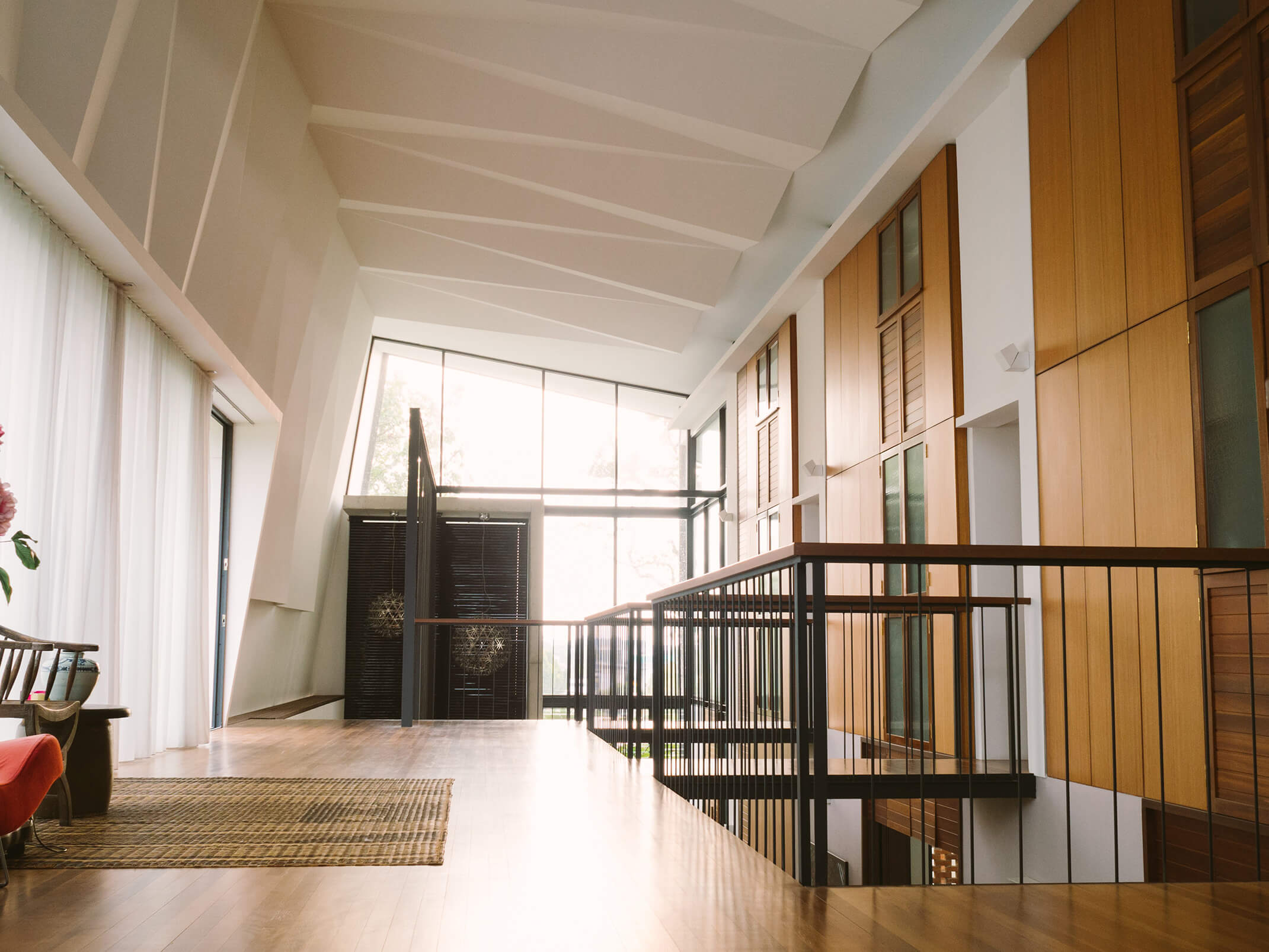
The house extends from east to west in a linear configuration. The main rooms face northwest towards an extensive garden with mature trees, including a durian tree and an avocado tree, along the northern boundary. Part of the northern garden is leased out as an orchard to grow saplings for sale.
The new wing is connected to the original residence, now occupied solely by the parents. It is accessed by a separate entrance, via a long gallery where the history of the family is displayed in photographs and artefacts. Many of the rice storage jars in the gallery come from Dona’s grandmother’s bilik in Sibu. The clay jars have lids so that djinns cannot enter.
The new wing is entered from a car porch at the western extremity, to a double height lobby giving access to the long gallery. To the left of the entrance is a long room accommodating the music room, living area and formal dining, overlooking a 25 m lap pool. To the right is a splendid staircase, and beyond a reception space, reminiscent of a serambi, a powder room, and an open kitchen/servery.
But, it is the upper floor that most clearly recalls the traditional Dayak/Iban longhouse. The biliks (living quarters) of the four sons are linked by bridges to a linear communal space, that references the ruai (long/wide verandah) in a longhouse. The design also alludes to the street of Chinese shophouses and draws precedence from the typology, with high upper floor ceilings.
A feature of the verandah is the faceted walls and ceiling where Min wished to see how far he could ‘stretch the ceiling’. The result is a plaster ceiling that Min describes as ‘an origami folded ceiling’. Over the kitchen there are timber beams and boards reminiscent of a kampong house.
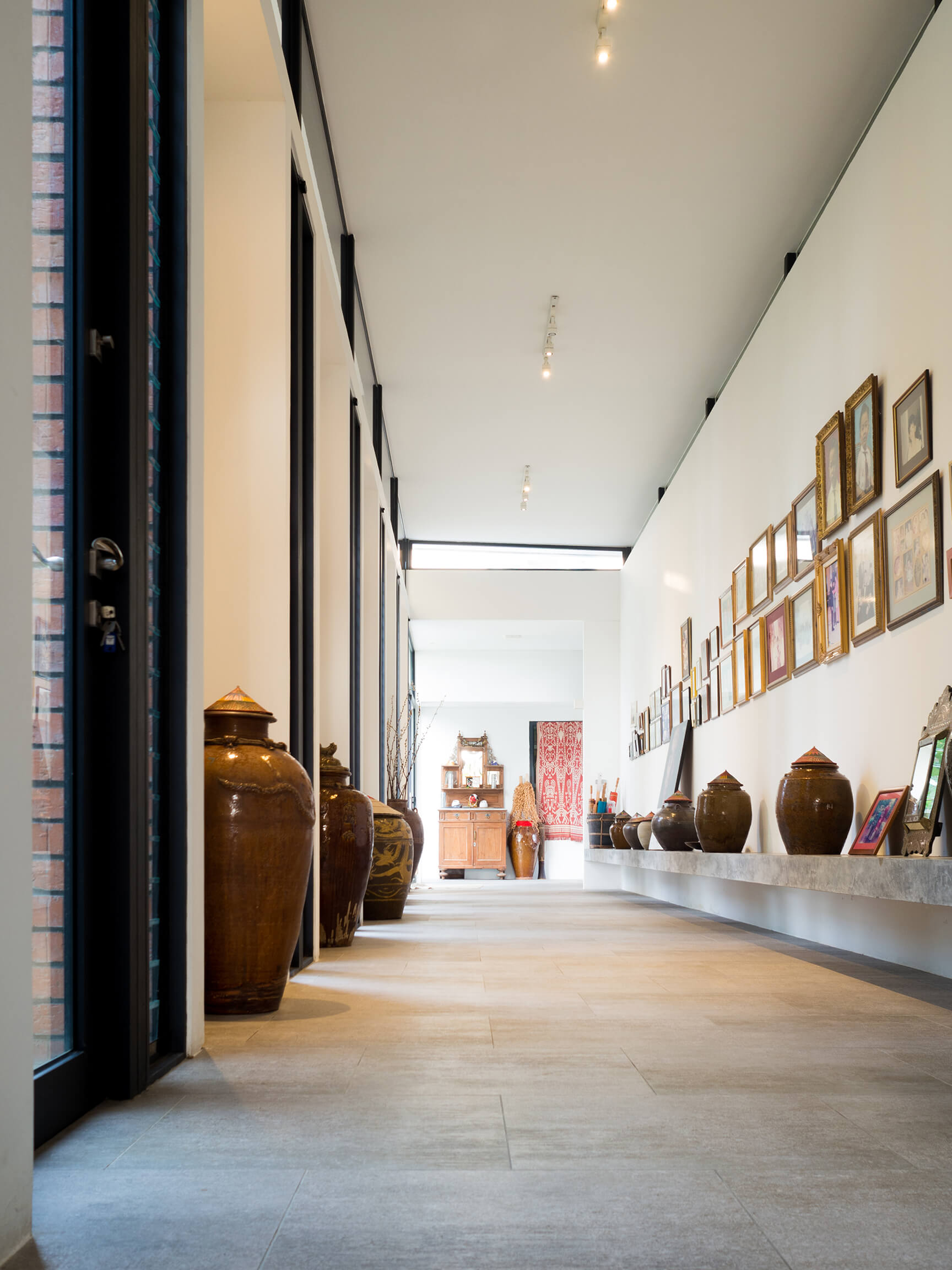
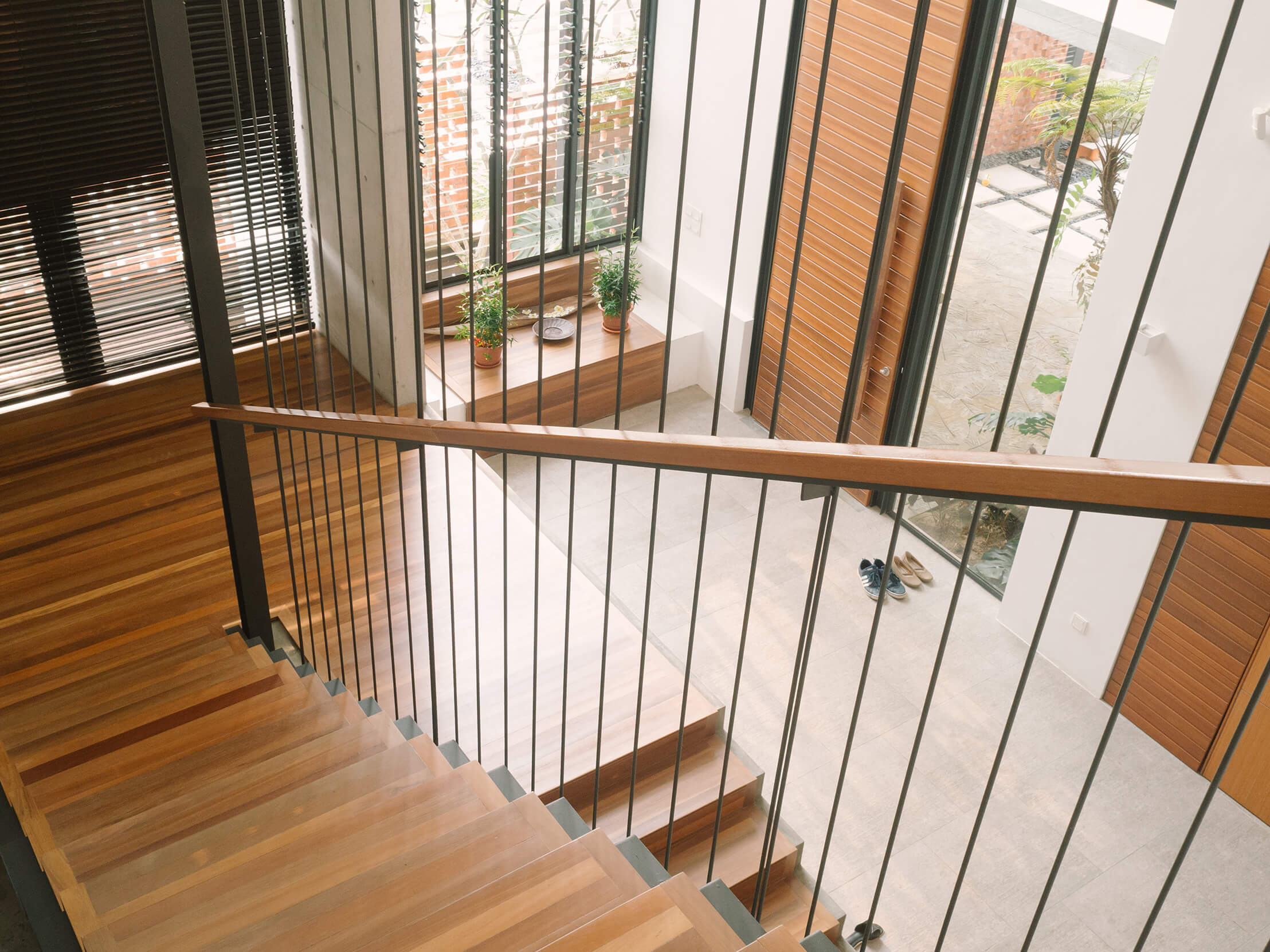
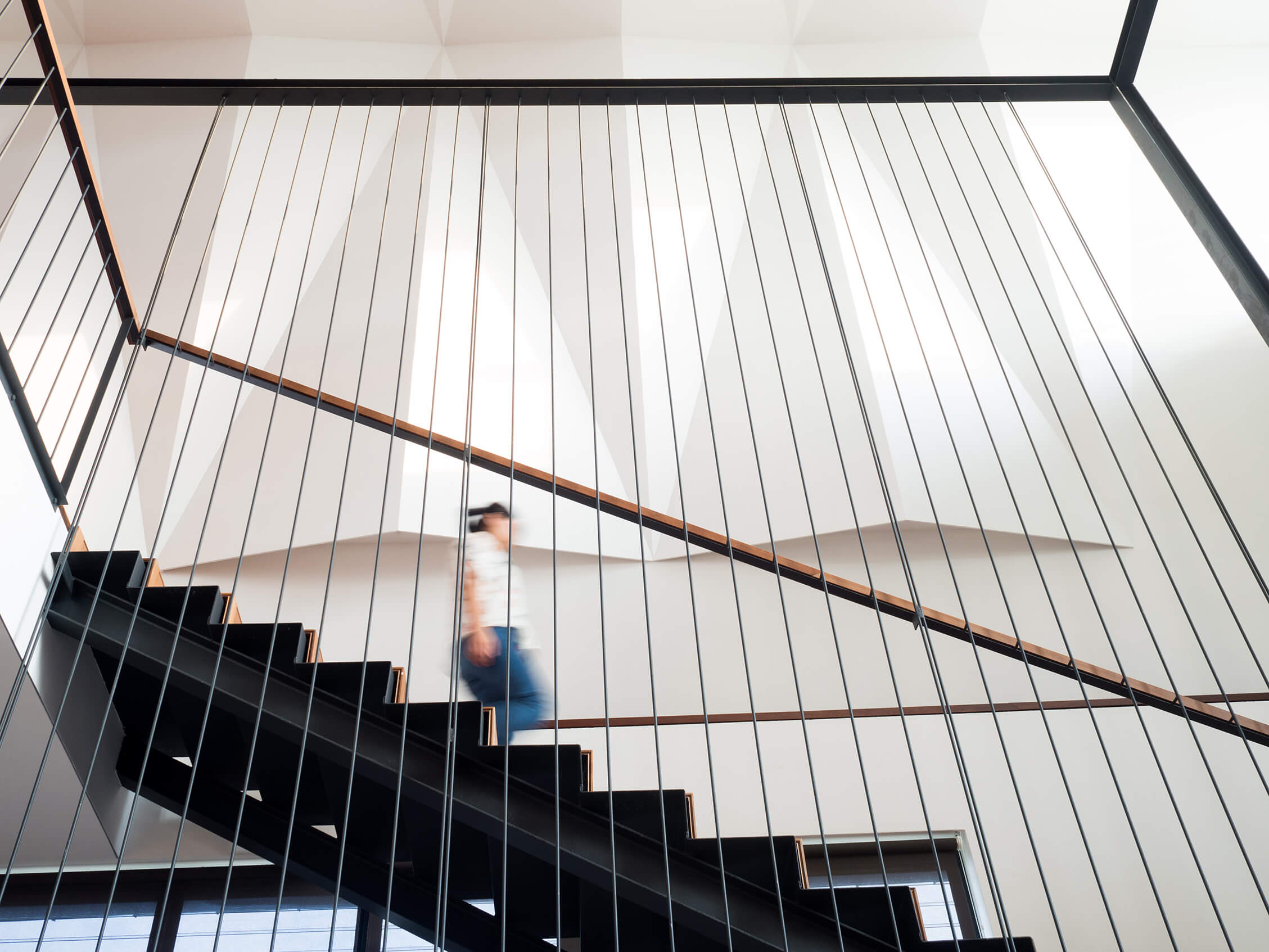
With the completion of the linear extension another phase of the house began in the courtyard between old and new residences. A dining pavilion was built to unify the family, where three, sometimes four, generations gather for dinner. Soon another space was added – a nursery on the upper floor – in time for the arrival of Richard and Dona’s first grandchild, born to their son Brandon and Stephanie.
The journey through the house whether from the east or the west is via a sequence of carefully choreographed spaces. Like the longhouse it is a linear route with subsidiary functions off the primary route. Within this multi-generational house there are many intimate spaces – for family life, contemplation and privacy – embodying traditional cultural practice.
- Text credit :
- Robert Powell | The Tropical Malaysian House Volume 2
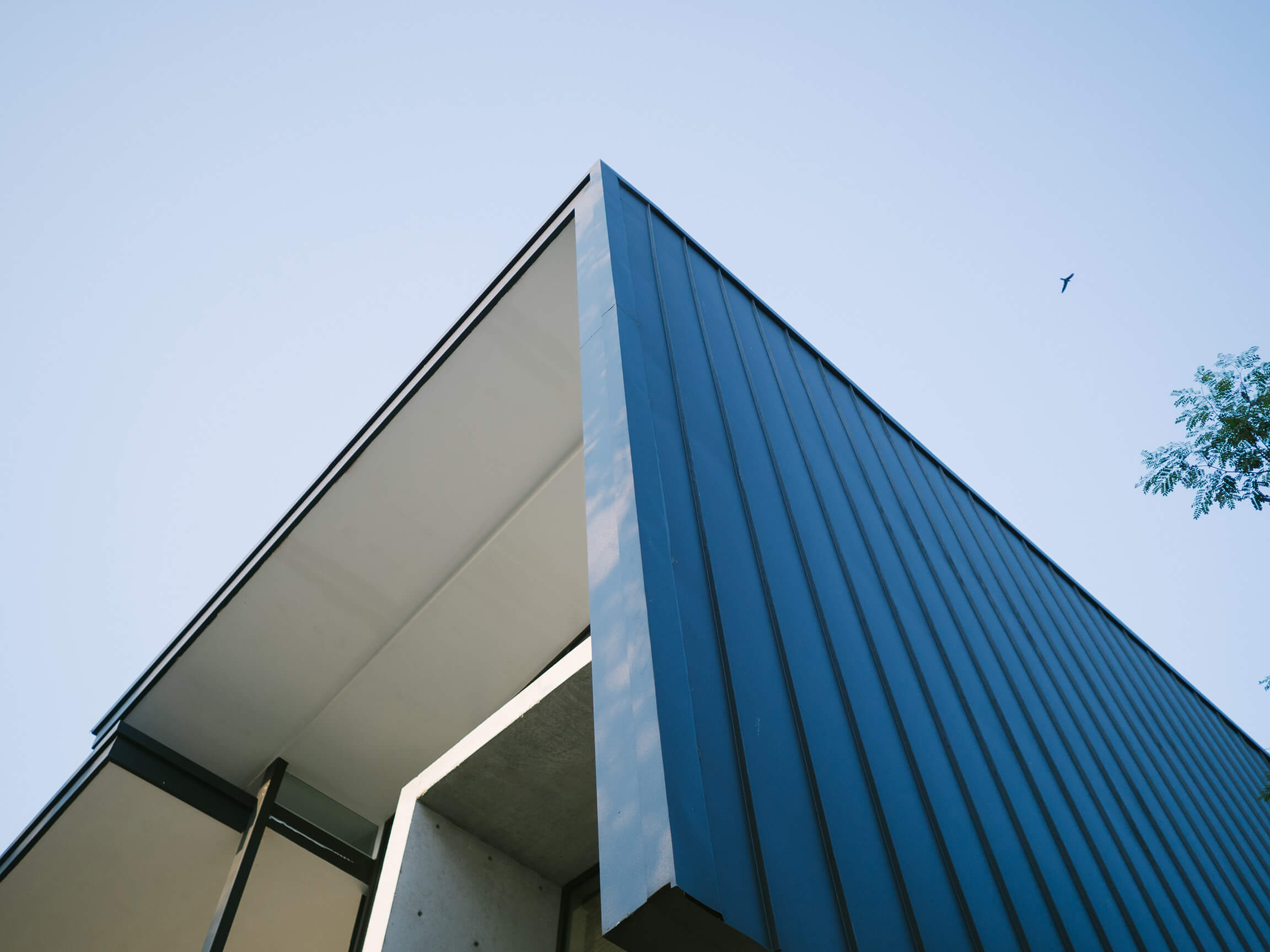
Team Credits
Architect
- MinWee Architect
Engineer
- C & S : Wee Hii Khoon
Contractor
- Liew Kuet Chen
Design Team
- Wee Hii Min
- Claudia Law
- Fiona Law
- George Lee
- Vivian Kuan
- Tan Sher Lin
- Sean Wee
Photography
- Lionel Kueh
- Eunice Chai
- Sean Wee
Publications
Share our project
